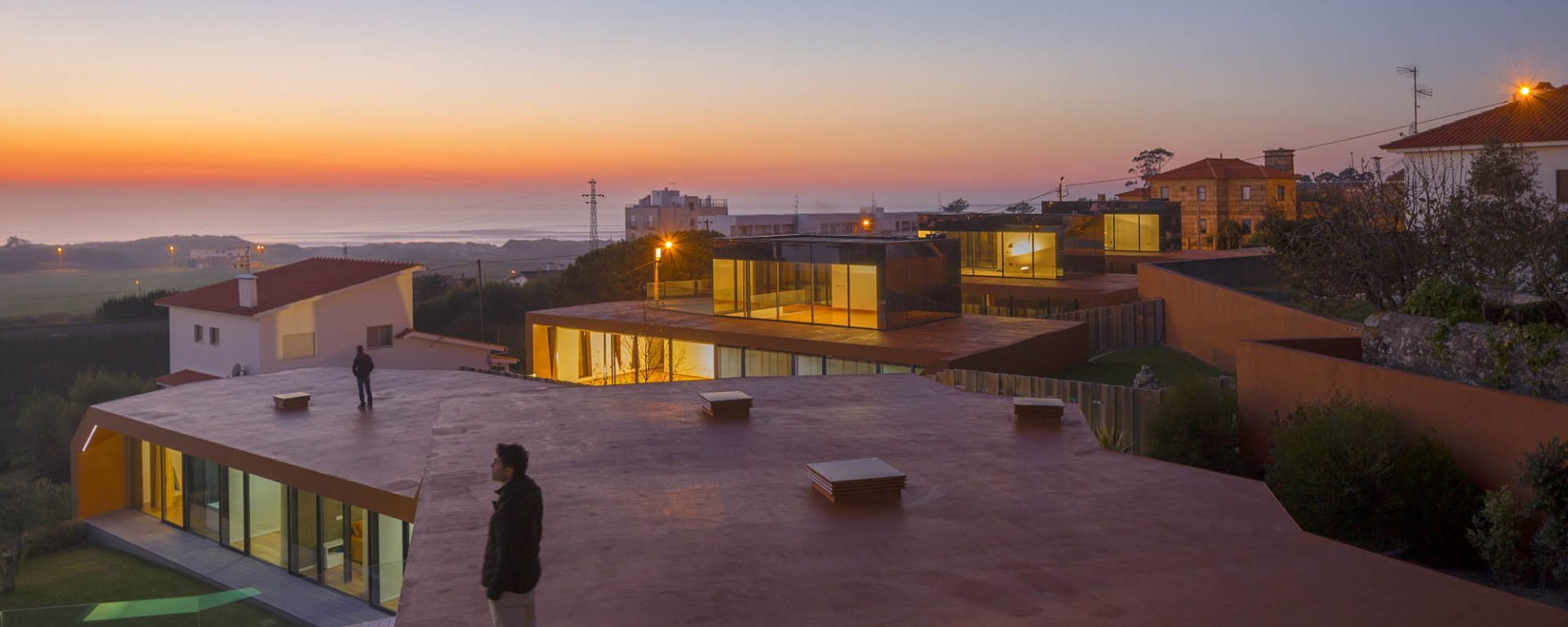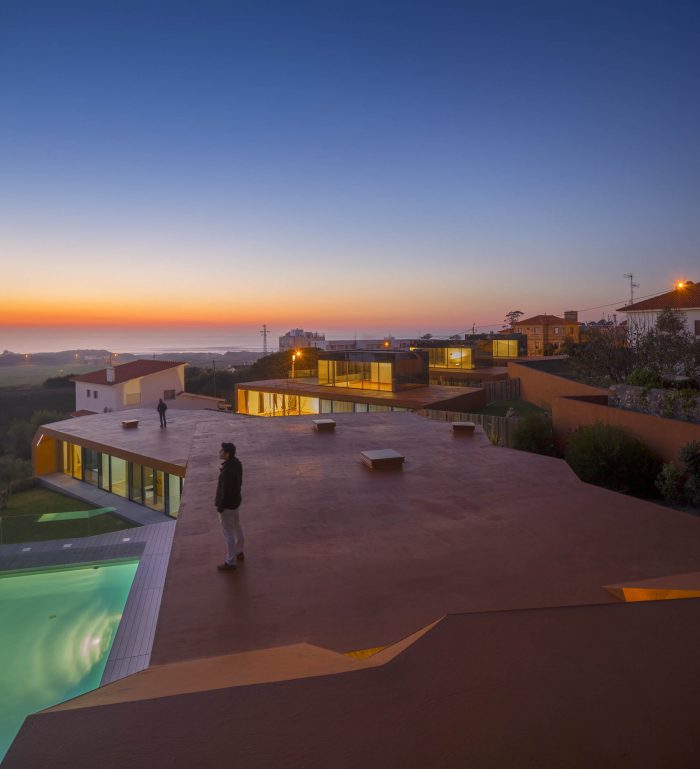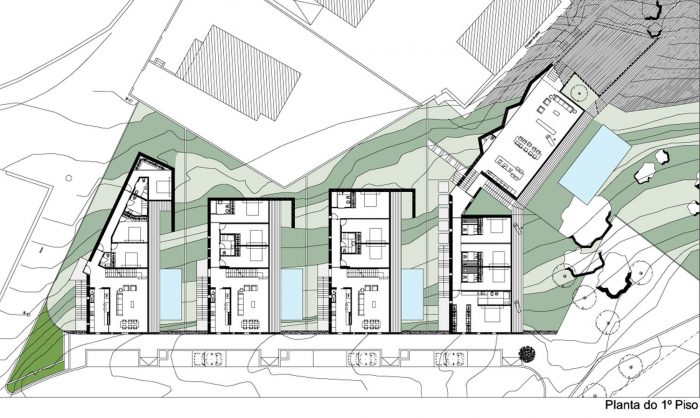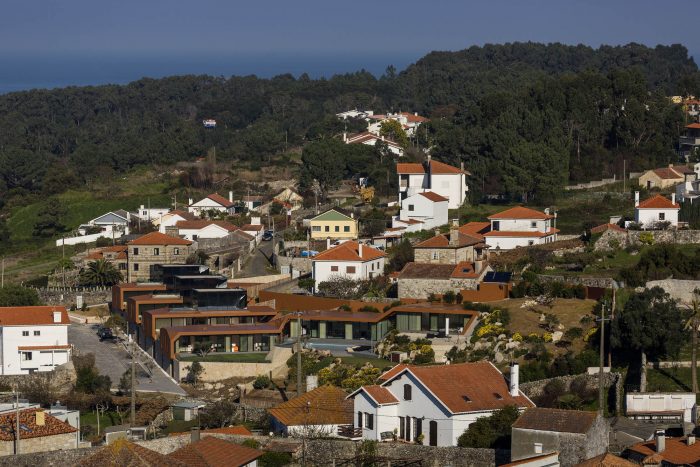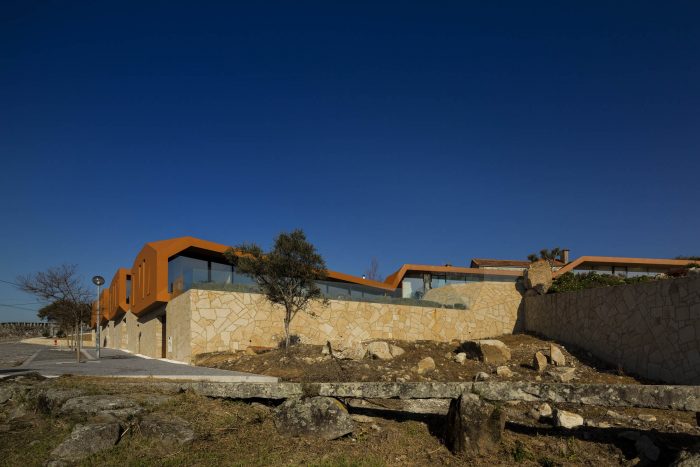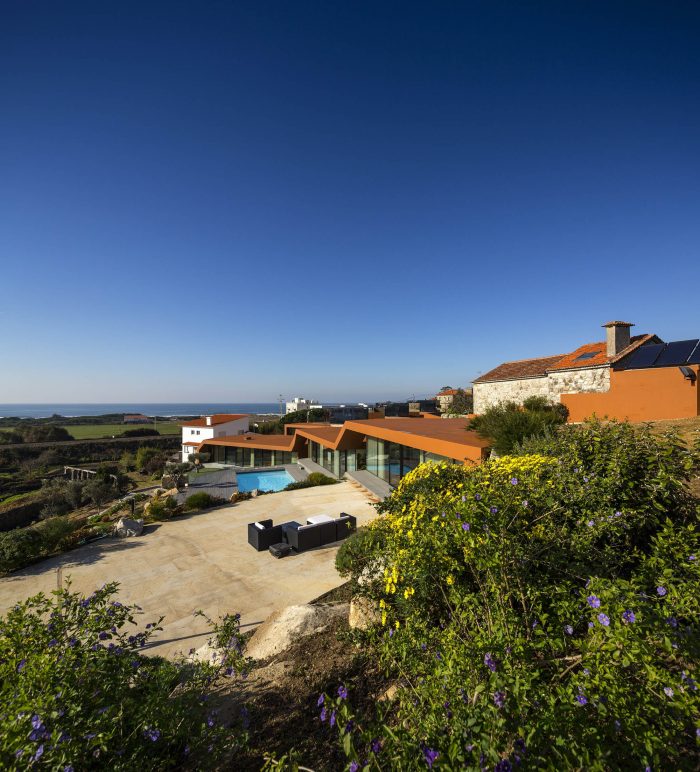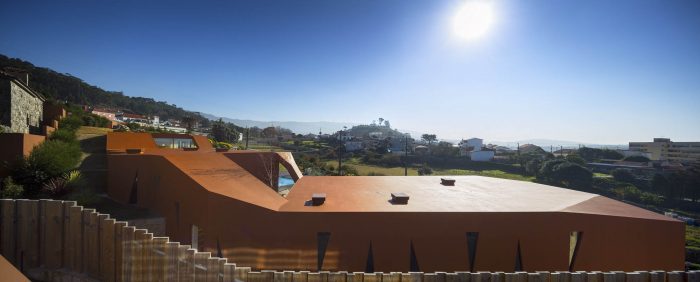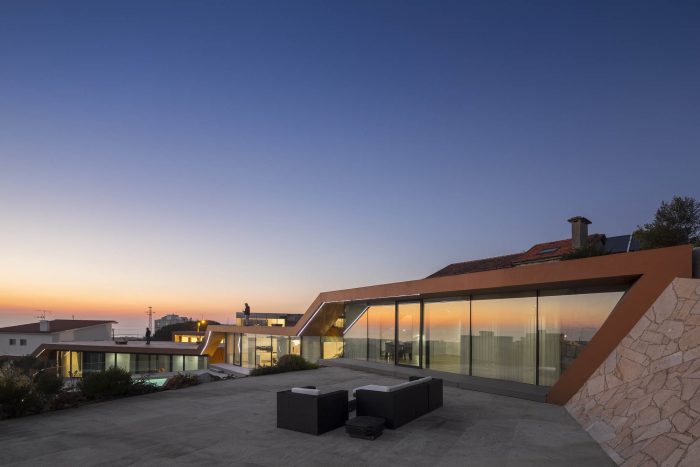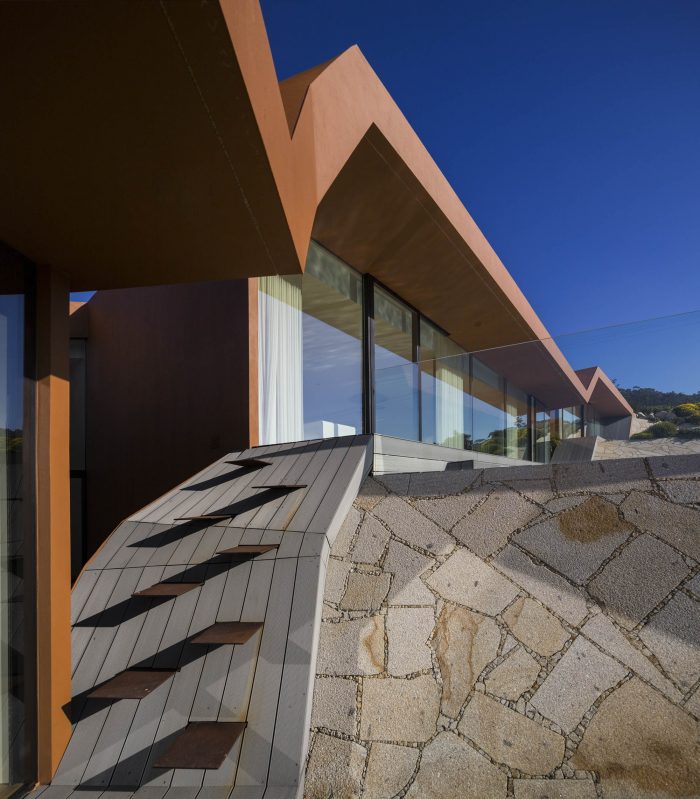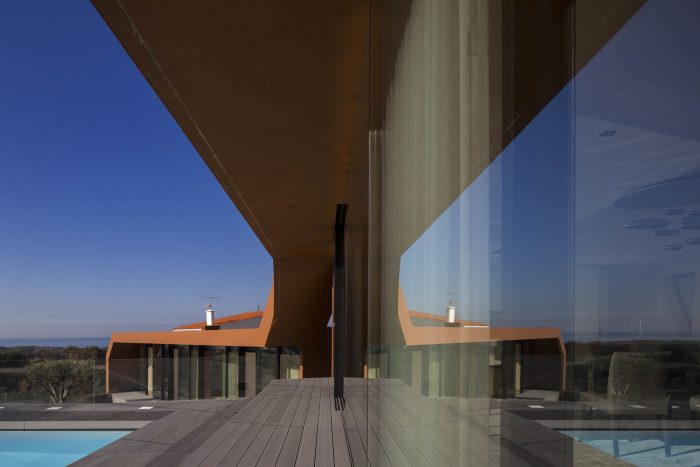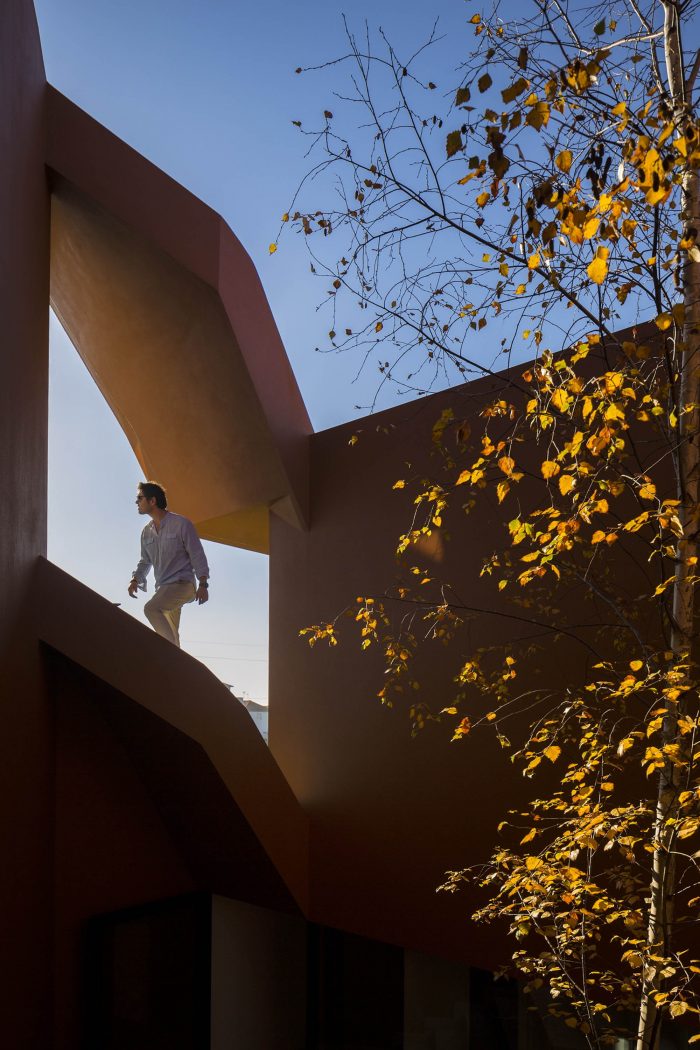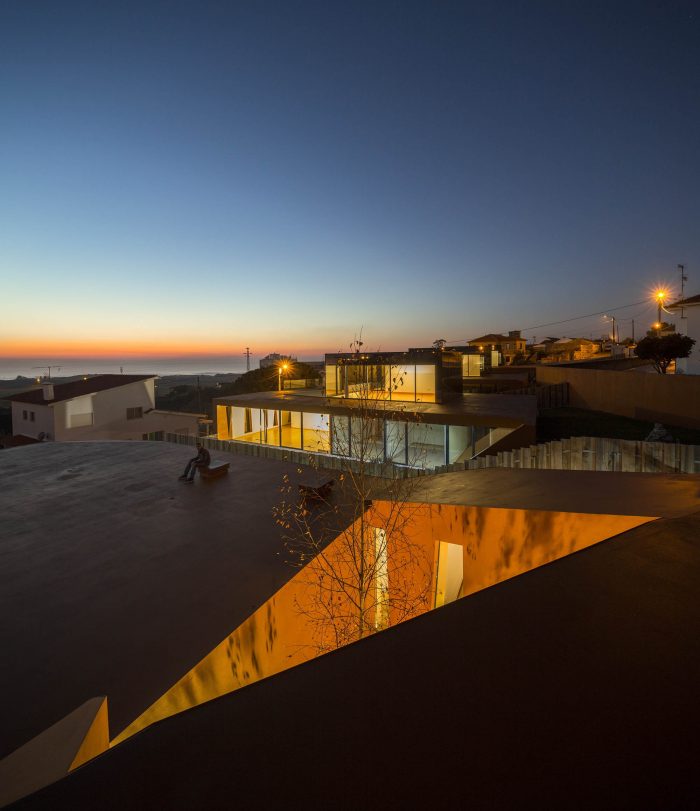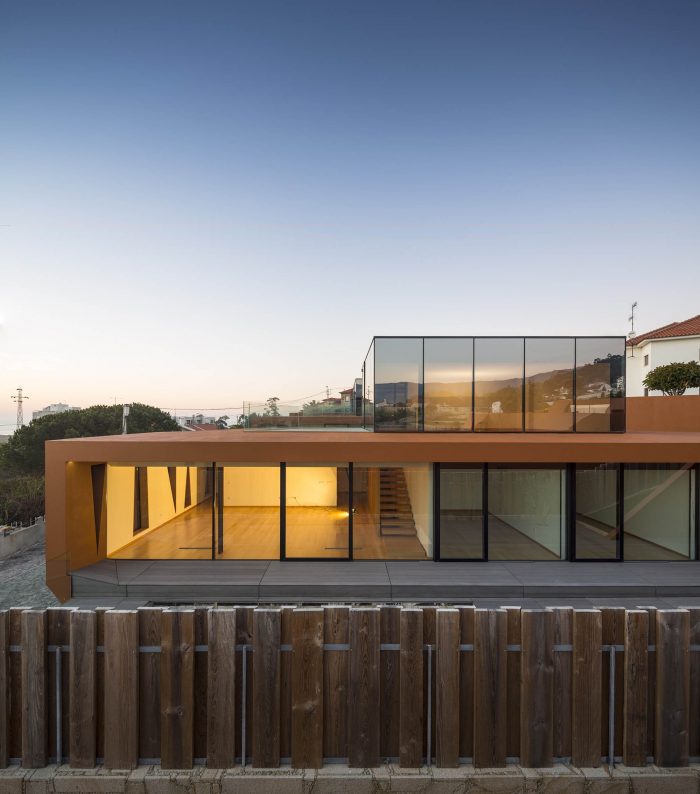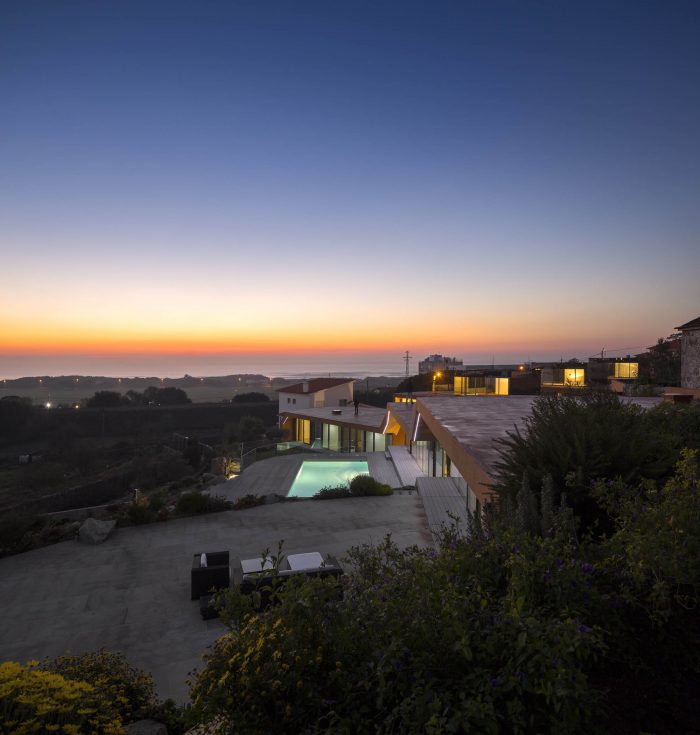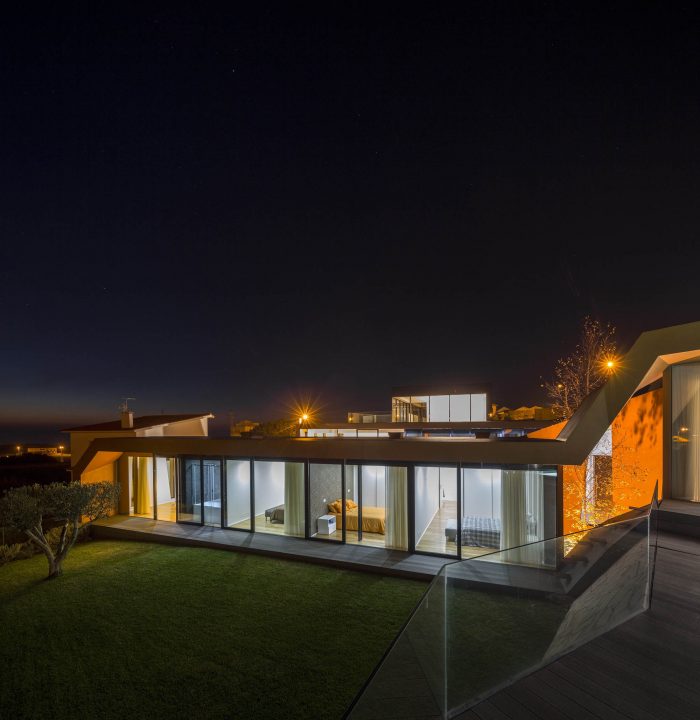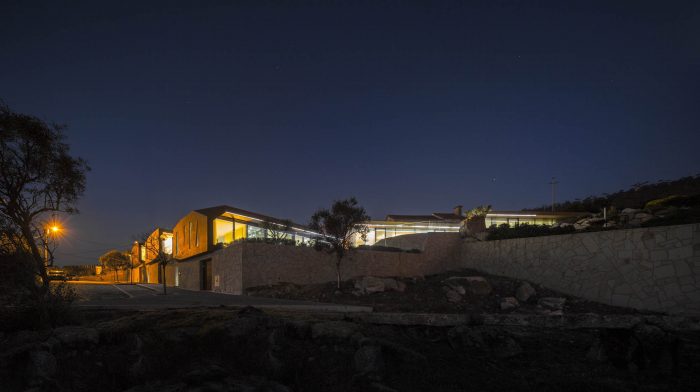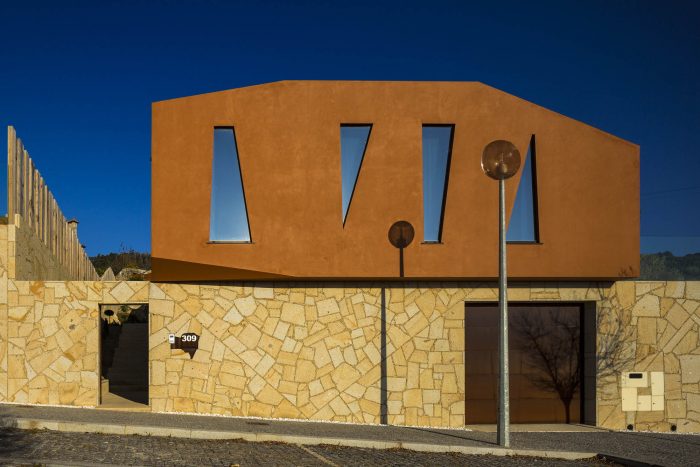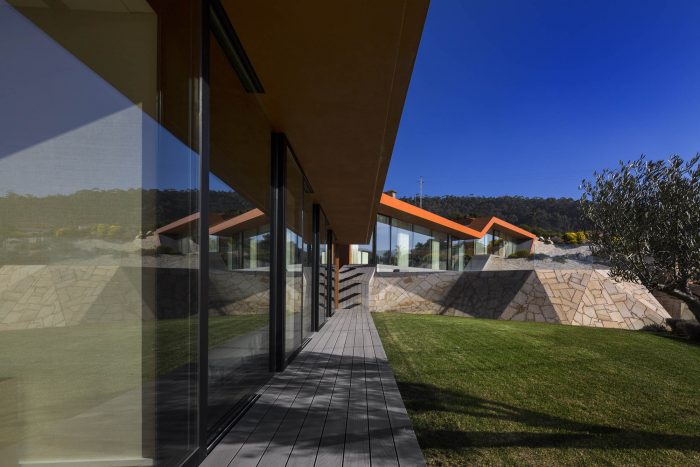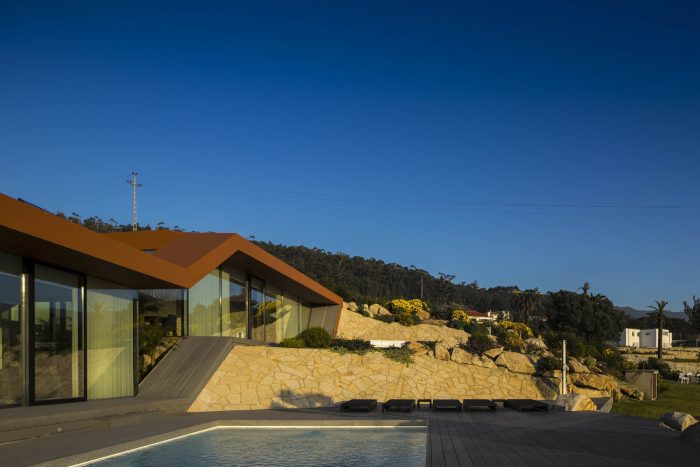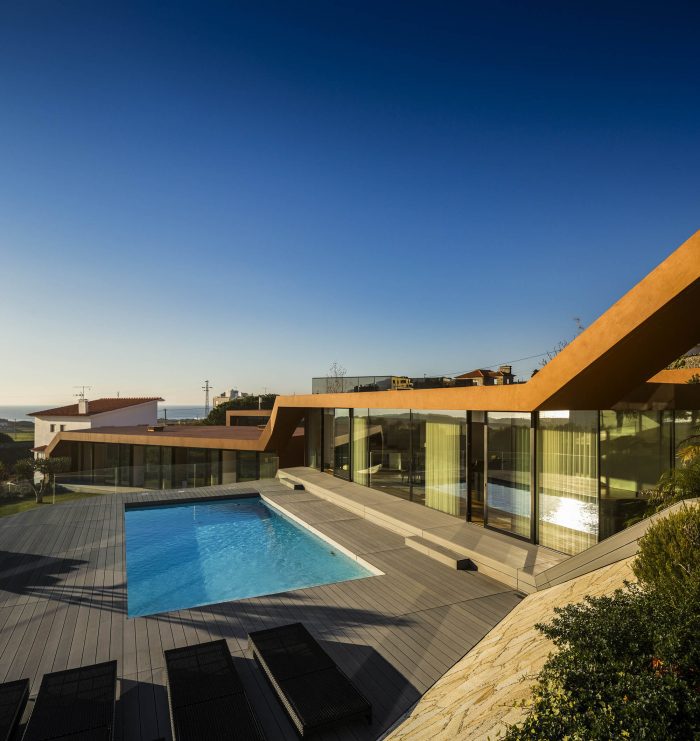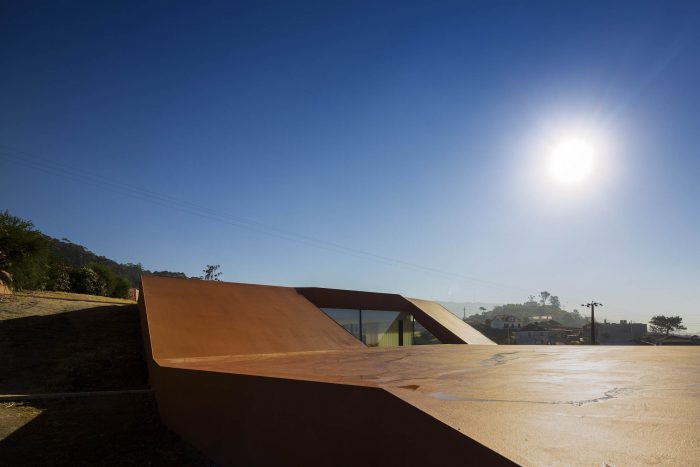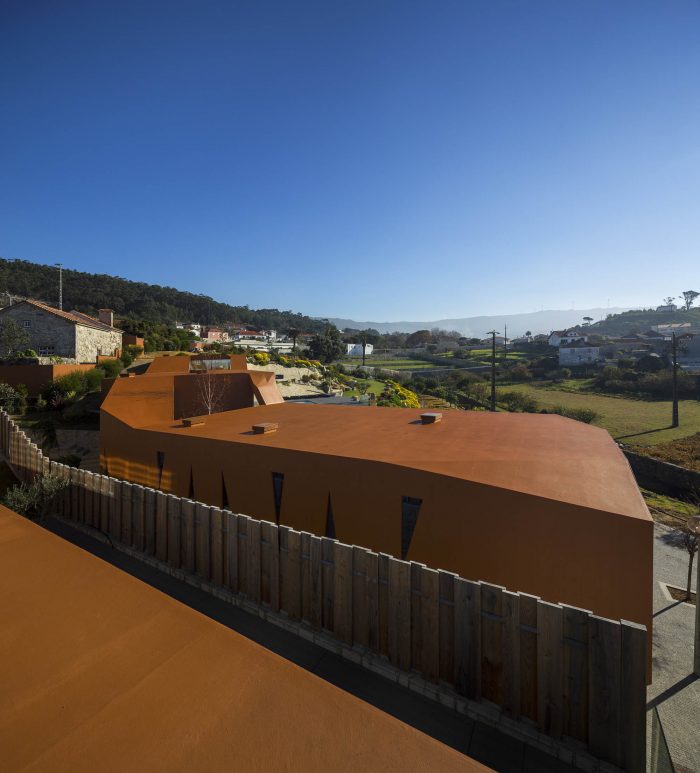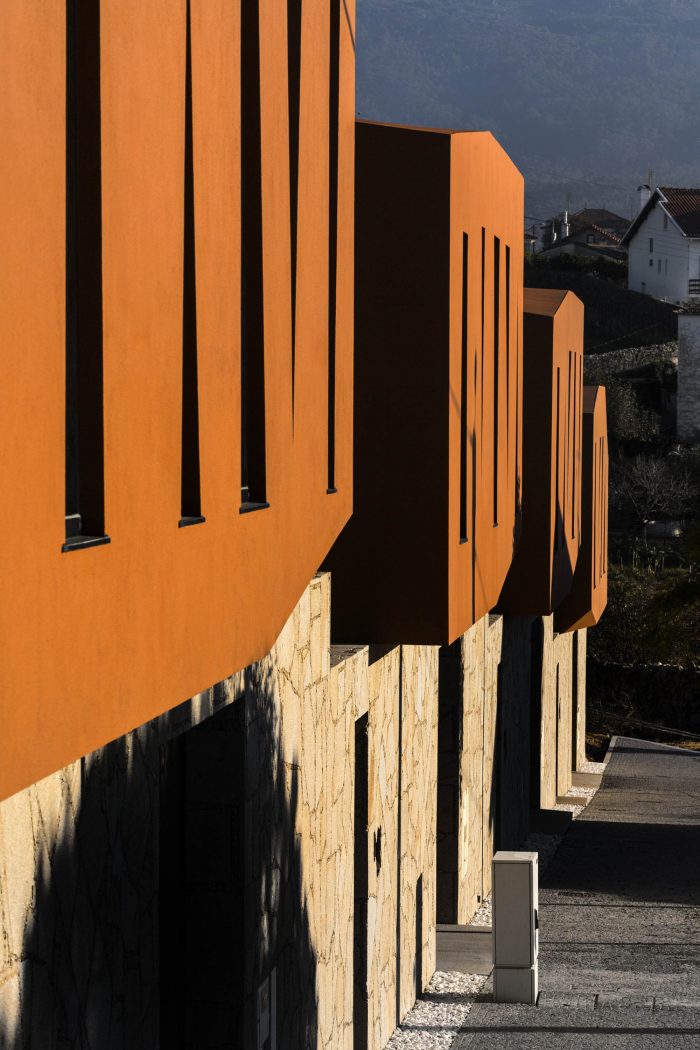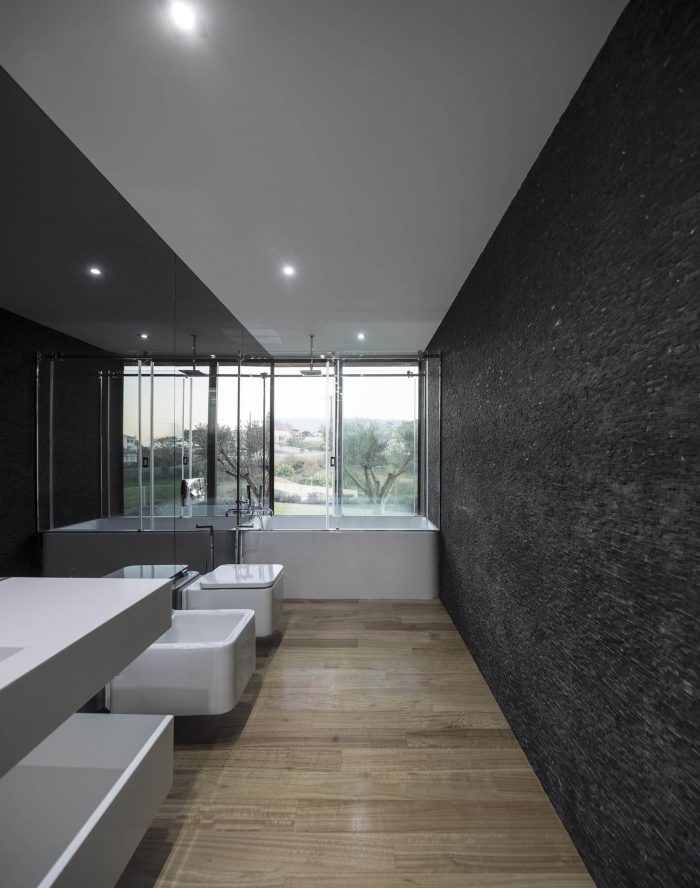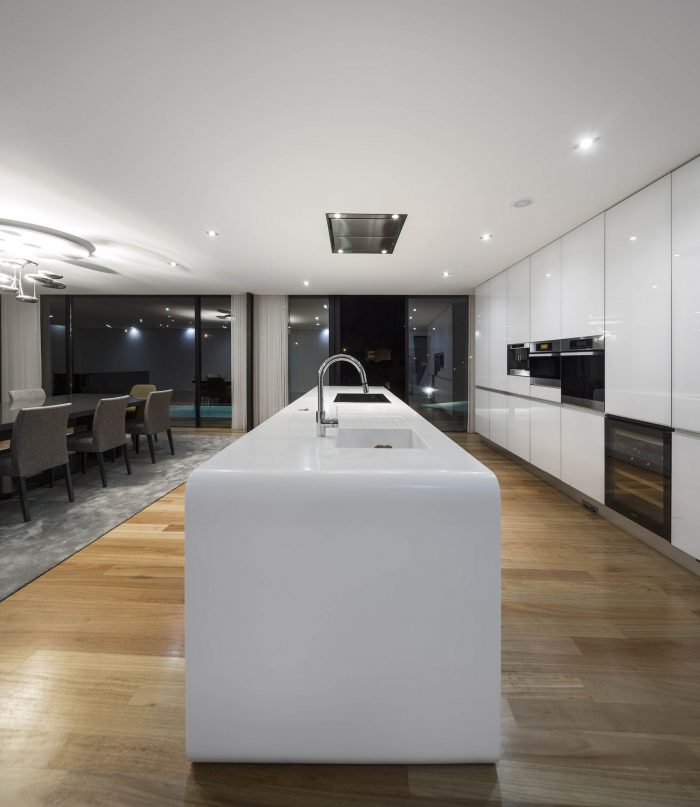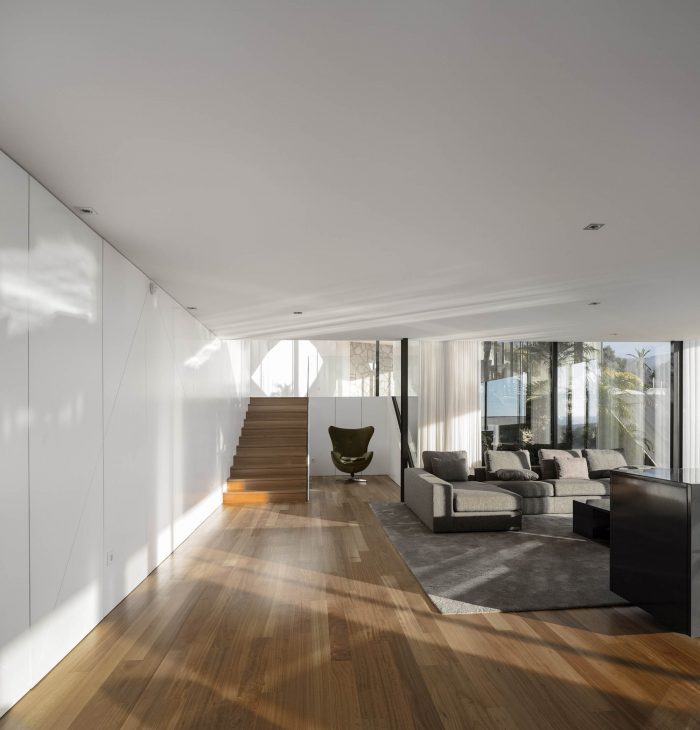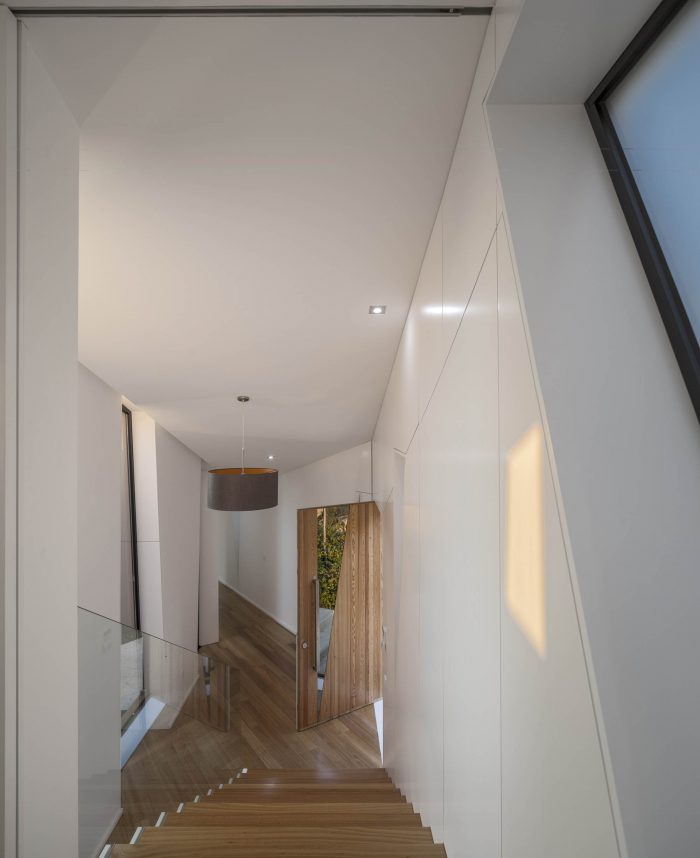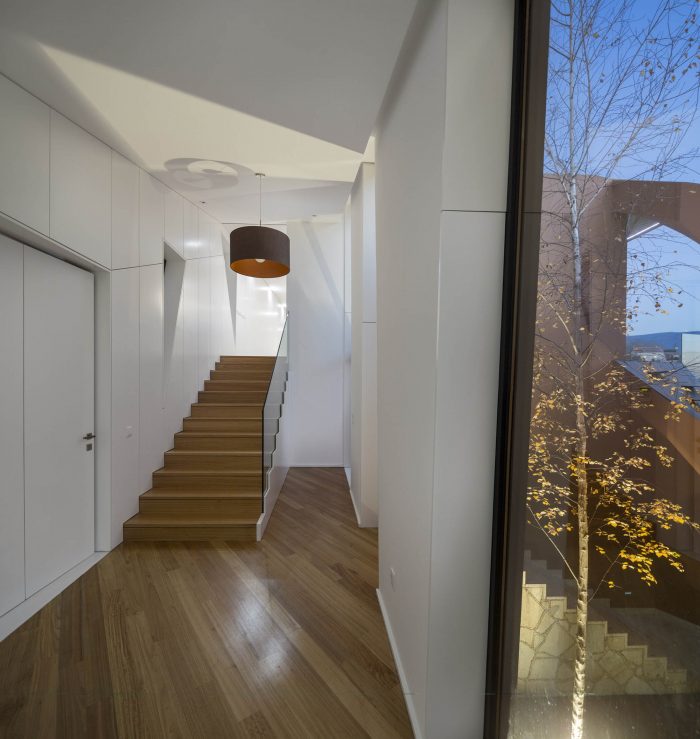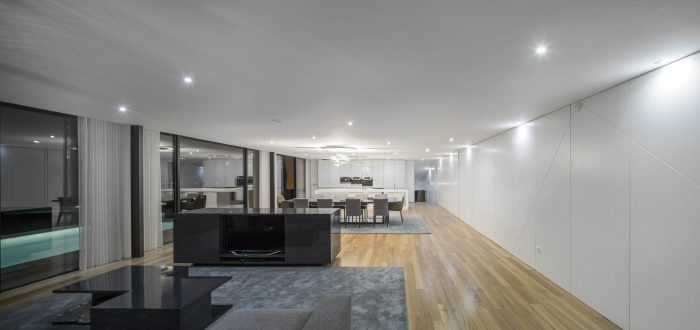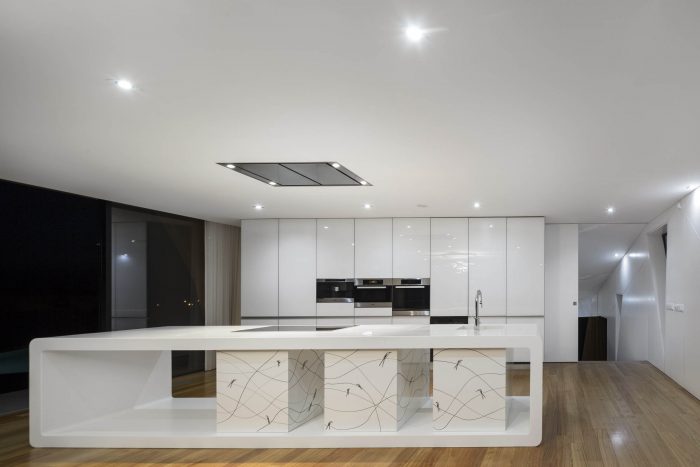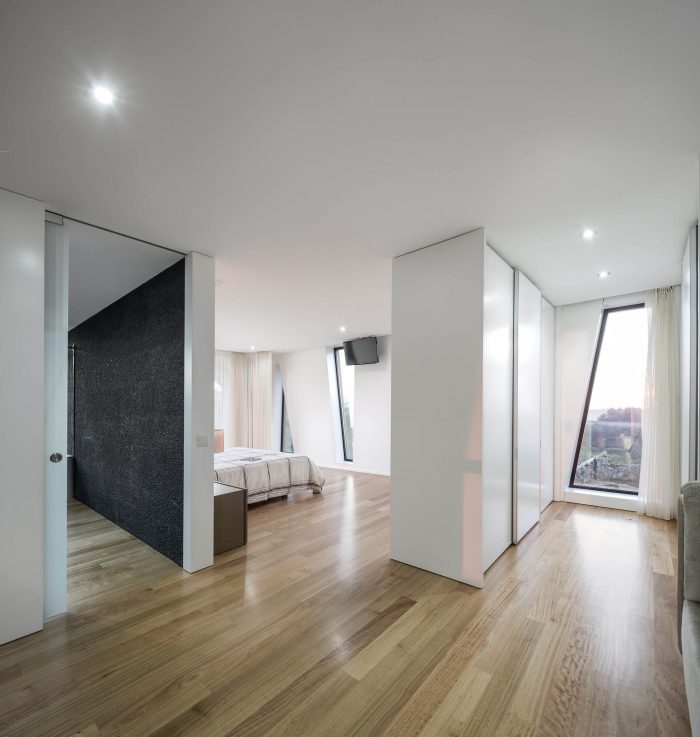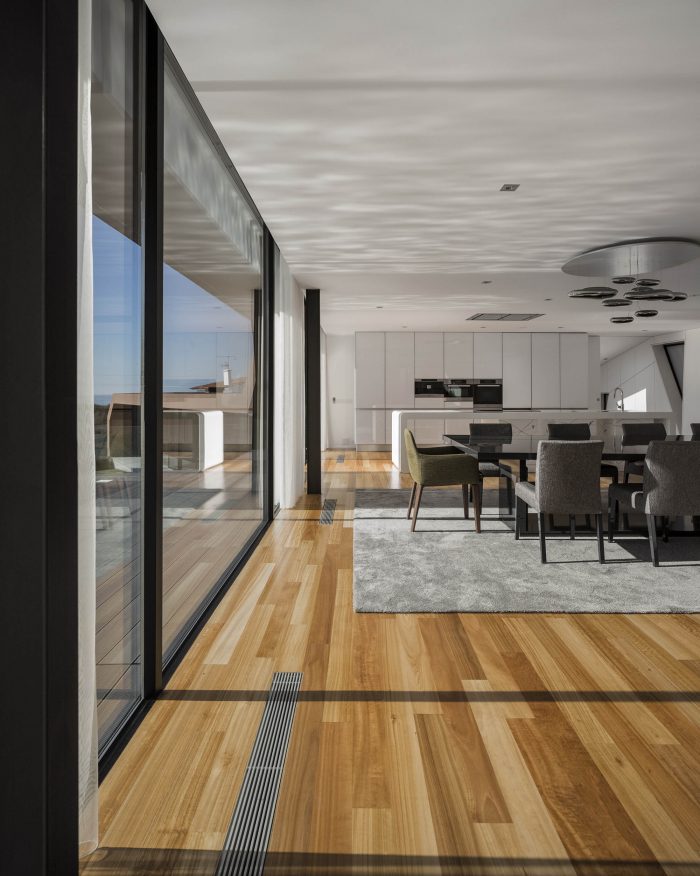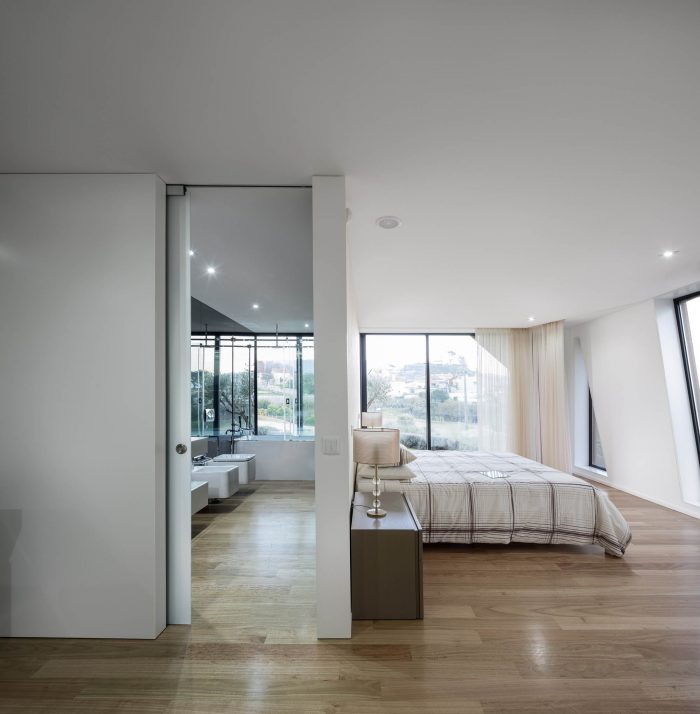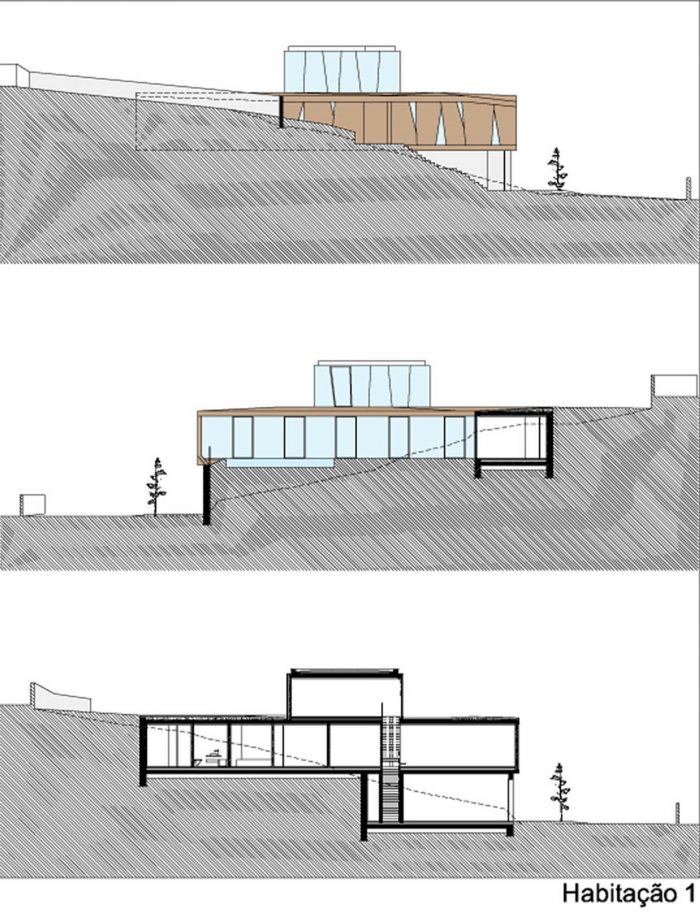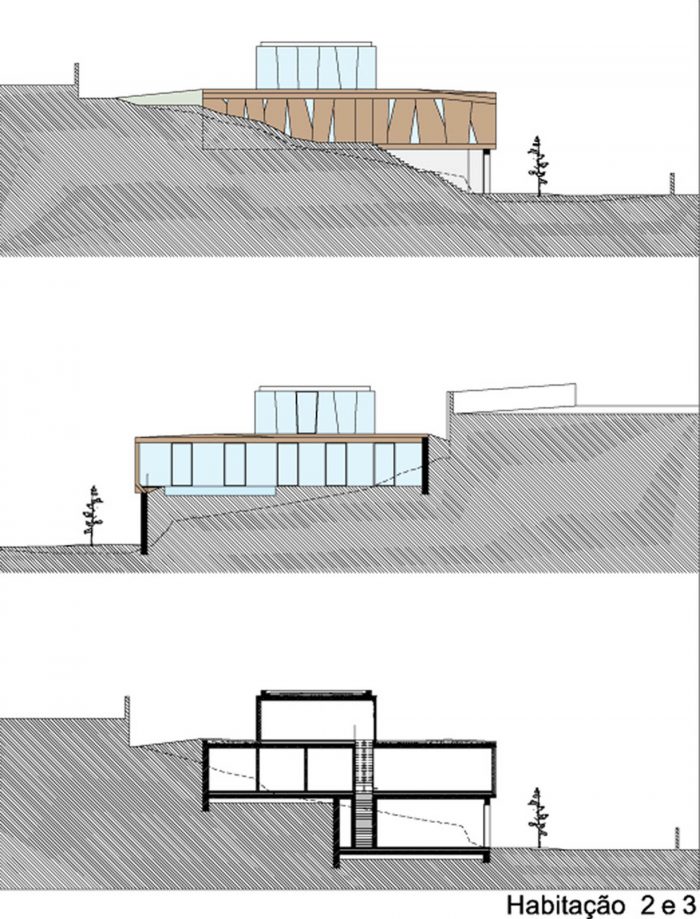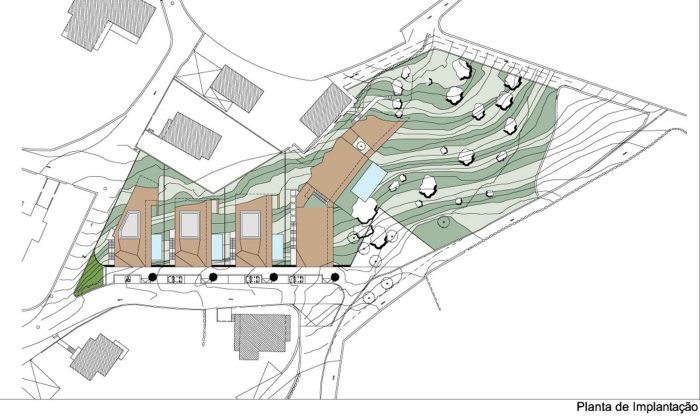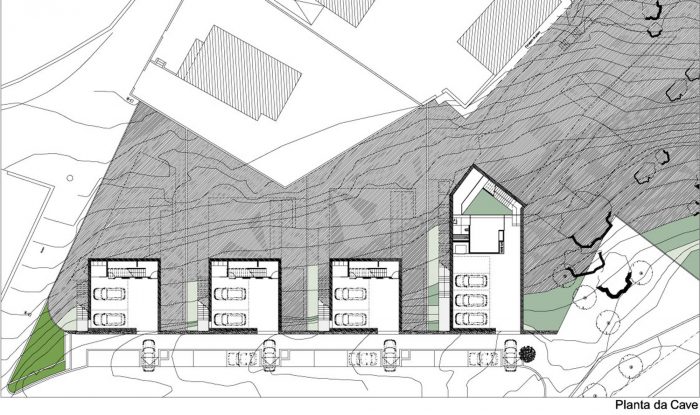从远处看,这里的地形似乎很荒凉。一座相当陡峭的岩石山丘,粗糙的灌木丛出现了,周围是建筑物和郁郁葱葱的场地。西边,风景令人眼花缭乱……一望无际的平原上点缀着房屋,与铁路线相交,一直延伸到海边。
From afar the terrain seems inhospitable. A rather steep and rocky massif with crude and rough undergrowth appears, surrounded by buildings and lush grounds. To the west, the landscape dazzles…a vast plain dotted with homes and intersected by the railway line extends to the sea.
规划将要求建造四栋单户独立屋,项目加入了与该地块相关的成分,导致了这个想法的萌芽。因此,带壁架的岩石地形应该得到类似的东西……应该增加更多的岩石:悬浮在划定地形的墙上的可居住的石头。
The plan would call for four single-family detached houses with the project adding the ingredients associated with the site, leading to the sprouting of the idea. Thus, the rocky terrain with the ledge deserved something similar…more rocks should be added: habitable stones suspended on the wall that delimits the terrain.
最初的困难挑战变成了这个项目中最丰富的焦点。建筑物从地面上冒出来,窥视着延伸到每个地段边界之外的景观,以一种精明的方式在地形和周围环境中蔓延。
What was initially a difficult challenge turned into the most enriching focal point of the project. The buildings sprout up from the ground and peek over the landscape extending far beyond the boundaries of each lot, spreading out over the terrain and surroundings in an astute manner.
因此,住宅的设计原则是使建筑适应地形,并尽可能地利用自然采光或景观。在项目上,决定将建筑的居住区主要向南和东南方向开放,使每个居住空间都能有效地满足自身的需求,充分利用地形的限制,为每个地段获得更大的私密性。
The dwellings were thus designed on the principle of adapting the buildings to the terrain and taking the greatest advantage possible of natural lighting or the landscape. In terms of the project, it was decided to open the buildings’ living areas mainly towards the south and southeast, so that each living space responds effectively to its own needs, taking full advantage of the constraints imposed by the terrain, and obtaining greater privacy for each lot.
项目重点设计了三栋房屋,其内部的划分实际上是重复的,顶部是三个朝向大海的水晶立方体,它们可以作为日光浴室。
The project focused on designing three houses whose interior divisions are practically repeated, topped by three crystal cubes that turn towards the sea and which serve as a solarium.
在外面,该地段剩余的土地环绕并拥抱着岩石,部分被掩埋,岩石在地面上滚动,并停在那个精确的位置。而四号住宅则从土壤中萌发,通过与地形沟通的层次出现,并与其他三栋房屋和谐相处,停在街道上。这座住宅向着陡然向东边落下的地势敞开,与蜿蜒于田野间的花岗岩老水渠和平共处,从而不偏不倚地向外敞开,侵占着景观。
Outside, the lot’s remaining land surrounds and embraces the rock, partially buried, which rolled over the ground and came to a stop at that precise location. In turn, home number four sprouts from the soil, emerging through levels that communicate with the terrain and in harmony with the other three houses and halting at street-level. This home opens onto the terrain that falls steeply towards its eastern limit, peacefully coexisting with the old granite aqueduct that winds its way between fields, and thus, without bias, opens outwards appropriating the landscape.
沿路而过的人,面对着四块悬浮在时间中的切割石,欣赏着被另一列过往列车有节奏地移动所打断的风景。背景中,大海干扰着天空,夜幕降临……然后,意想不到的事情发生了……四块大石头上镶嵌的水晶闪闪发光,在重新开始的夜色中熠熠生辉。
Whoever passes along the road faces four cut stones suspended in time and enjoying the scenery that is rhythmically interrupted by the rhythmic movement of another passing train. In the background the sea interferes with the sky and night falls…and then the unexpected happens…sparkling inlaid crystals in four large stones shine and glisten in the night which begins anew.
建筑师:António Fernandez Architects
年份:2013年
摄影作品:Fernando Guerra | FG+SG
城市: AFIFE
国家:葡萄牙
Architects: António Fernandez Architects
Year: 2013
Photographs: Fernando Guerra | FG+SG
City: AFIFE
Country: Portugal

